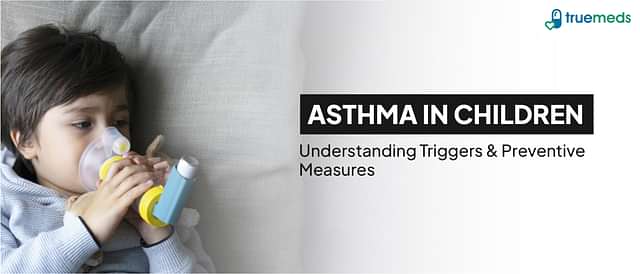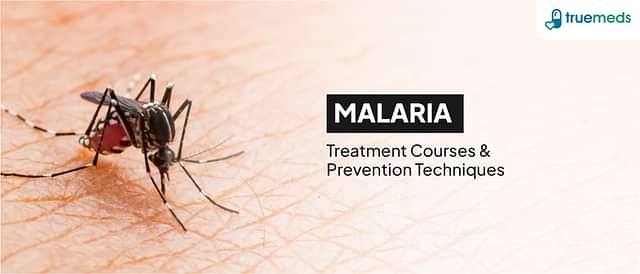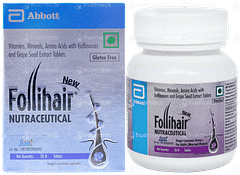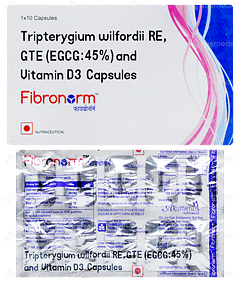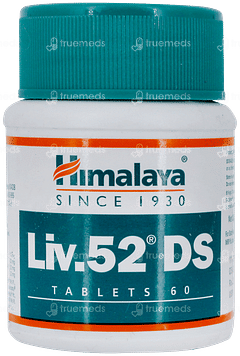Ear Pain
Ear pain, also called an earache, can happen for many reasons. It might be a sign of an ear infection or another health problem. The medical term for ear pain is otalgia. The pain can feel dull, sharp, mild, or strong, and it may come and go. Most earaches are not serious. But if the pain happens often or lasts more than three days, it could mean something more serious and should be checked by a doctor.
Last updated on : 08 Apr, 2025
Read time : 13 mins
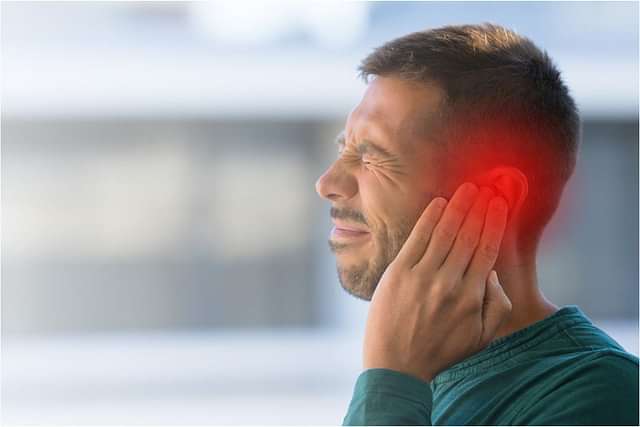
Overview of Disease
Ear pain, medically known as otalgia. The discomfort can range from mild to severe and may be accompanied by other symptoms such as fever, hearing loss, and discharge from the ear. One of the most frequent causes of ear pain is otitis media, an infection of the middle ear. Understanding the symptoms, causes, and treatment options for ear pain is essential for effective management and relief.
Key Factors about Ear Pain
| Category | Details |
| Also Referred as | Otalgia |
| Commonly Occurs In | Children (especially after upper respiratory infections), Individuals who swim frequently or have excessive moisture in the ear canal |
| Affected Organ | Middle ear, eardrum, external auditory canal, and eustachian tube |
| Type | Primary otalgia, Secondary or referred otalgia |
| Common Signs | Red, inflamed, or cloudy tympanic membrane; Pain; Fever; Hearing loss; Otorrhoea (if eardrum is perforated); Pain with traction on the auricle or pressure on the tragus; Red and swollen external auditory canal; Discharge |
| Consulting Specialist | Ear, Nose, and Throat (ENT) doctor or otolaryngologist, Paediatrician |
| Treatement Procedures | Antibiotics, Pain relief medications, Myringotomy (for fluid drainage in some cases), Antibiotic ear drops, Cleaning the ear canal, Oral antibiotics (for severe cases) |
| Managed By | Paediatrician, ENT specialist, Primary care physician |
| Mimiciking Condition | Mastoiditis (especially if pain and tenderness are behind the ear) |
Symptoms of Ear Pain
Ear pain usually feels like pressure in the ear. It can start slowly or suddenly and may be very strong.
Common signs and symptoms include:
- Sharp or dull pain in one or both ears
- Difficulty hearing due to fluid or blockage in the ear
- Discharge from the ears (otorrhea)
- Jaw pain
- Sore throat (symptoms section)
- Itching
- Redness and swelling around the ear
In children, additional symptoms may be present, such as:
- Fever
- Irritability
- Headache
- Loss of appetite (symptoms section)
- Nighttime restlessness
- Disorientation
- Scratching or pulling on ears
If you or your child experience persistent ear pain or any of these symptoms, it is important to seek medical attention for proper diagnosis and treatment. Left untreated, ear infections can lead to more serious complications.
Causes of Ear Pain
The eustachian tube connects the middle ear to the back of the throat and helps drain fluid from the ear. If this tube gets blocked, fluid can build up, causing pressure behind the eardrum or leading to an ear infection. The eustachian tube connects the middle ear to the back of the throat and helps drain fluid from the ear. If this tube gets blocked, fluid can build up, causing pressure behind the eardrum or leading to an ear infection.
Some of the most common causes include:
- Ear Infections: These are the most common cause of ear pain and can occur in the outer, middle, or inner ear. Middle ear infections (otitis media) are often caused by respiratory tract infections that lead to fluid buildup behind the eardrums. Outer ear infections (otitis externa) are more common.
- Earwax Buildup: Excessive earwax can block the ear canal and cause pain.
- Foreign Objects: Insertion of foreign objects into the ear can cause pain and potentially lead to infection.
- Sinus Infections: Sinusitis can cause referred pain in the ears due to the shared nerve pathways.
- Allergies: Allergic reactions can lead to congestion and ear pain.
- Dental Issues: Problems such as caries, abscesses, or pulpitis can cause referred pain in the ears.
- Temporomandibular Joint (TMJ) Syndrome: Disorders of the TMJ can cause pain in the ears and jaw.
- Ear pain in adults is less likely to be caused by an ear infection.
- The pain you feel in the ear may actually come from another area.
- Possible sources of pain include:
- Teeth problems
- Jaw joint (temporomandibular joint) issues
- Throat infections or irritation
Ear pain in a child or infant is often caused by an infection. Other possible causes include:
- Irritation of the ear canal from cotton swabs
- Soap or shampoo trapped in the ear
Risk Factors
Several factors can increase the risk of developing ear pain (otalgia). These include:
Age: Children between 6 months and 2 years are more prone to ear pain and infections due to their shorter and narrower eustachian tubes.
Allergies: Allergic reactions can lead to congestion, blocking the Eustachian tubes and causing fluid buildup in the middle ear.
Exposure to tobacco smoke: Children exposed to household smoking have a significantly higher chance of experiencing painful ear problems.
Cold and sinus infections: These conditions can cause swelling and blockage of the eustachian tubes, increasing the risk of ear infections.
Infant practices: Bottle feeding, especially when lying down, is associated with a greater risk of ear infection compared to breastfeeding. Infants and young children who use pacifiers have a higher risk of ear infections.
Recent illness or ear infection: Having a recent illness or ear infection can make an individual more susceptible to another ear infection.
Gender: Males have a higher incidence of ear infections compared to females.
Low birth weight: Infants born with a low birth weight are more likely to develop ear infections.
Limited access to healthcare: Delayed treatment due to lack of access to healthcare can increase the risk of complications.
Daycare attendance: Children attending daycare have a higher exposure to pathogens, increasing their risk of ear infections.
Understanding these risk factors can help in identifying individuals who may be more susceptible to ear pain and ear infections. Early recognition and appropriate management can prevent complications and ensure better outcomes.
Complications
While most cases of ear pain resolve without serious consequences, some individuals may experience complications, especially if the underlying cause is not addressed promptly. Potential complications of ear pain include:
Hearing loss: Chronic ear infections can lead to hearing loss, which is usually temporary but can occasionally be permanent.
Speech or language delay: Children with chronic fluid in the middle ear may experience delays in speech or language development.
Mastoiditis: An infection of the mastoid bone, located behind the ear, can occur as a complication of an untreated ear infection.
Meningitis: In rare cases, a bacterial ear infection can spread to the membranes covering the brain and spinal cord, causing meningitis.
Ruptured eardrum: Increased pressure from fluid buildup in the middle ear can cause the eardrum to rupture, leading to hearing loss and ear discharge.
Chronic suppurative otitis media: This condition, characterised by persistent ear discharge and hearing loss, can develop as a result of untreated ear infections.
Petrous apicitis and malignant otitis externa: Infections can occasionally spread to the adjacent bones, causing serious complications that require prompt medical attention.
Recognising the signs and symptoms of ear pain and seeking timely medical care can help prevent these complications. If you experience severe ear pain, high fever, or persistent symptoms, consult your doctor for an accurate diagnosis and appropriate treatment.
Prevention of Ear Pain
Preventing ear pain involves a combination of lifestyle changes, hygiene practices, and medical interventions. Here are some strategies for preventing ear infections:
1. Practice Good Hygiene
Avoid inserting objects into the ear canal, such as cotton swabs or fingernails, as this can damage the eardrum or push earwax further into the canal.
After swimming or bathing, gently dry your ears with a soft towel or use a hair dryer on a low setting to remove excess moisture.
Practice good hand hygiene to prevent the spread of infections.
2. Preventing Ear Infections
Stay up to date with vaccinations, particularly the pneumococcal and influenza vaccines, which can help prevent ear infections.
Avoid exposure to secondhand smoke, as it increases the risk of ear infections, especially in children.
Breastfeed infants, as breast milk contains antibodies that can help protect against ear infections.
3. Noise Protection
Use earplugs or noise-cancelling headphones when exposed to loud noises, such as at concerts or while using power tools.
Follow the "60/60 rule" when using earphones: listen at no more than 60% of the maximum volume for no more than 60 minutes at a time.
4. Travel Precautions
When flying, chew gum, swallow, or yawn during takeoff and landing to help equalise pressure in the ears.
If you have a cold or allergies, consider using decongestants or nasal sprays before flying to prevent ear pain due to pressure changes.
By implementing these preventive measures, the risk of developing ear pain and otitis media can be significantly reduced, promoting better ear health in children and adults alike.
Diagnosis & Tests
The diagnosis of ear pain involves a comprehensive physical examination and various tests to determine the underlying cause. Your doctor will begin by thoroughly examining your ear, including the auricle (outer ear) and the area around the ear. They will use an otoscope, a specialised instrument with a light and magnifying lens, to inspect the ear canal and eardrum. In some cases, earwax may need to be removed to get a clear view of the eardrum.
During the examination, your doctor may use a pneumatic otoscope to assess the movement of the eardrum. This helps in diagnosing conditions like middle ear infections, where fluid buildup behind the eardrum can restrict its normal movement. Additionally, various hearing tests may be conducted, such as:
Whispered and spoken voice tests
Tuning fork tests
Audiometry
Tympanometry
Otoacoustic emission (OAE) tests
These tests help in evaluating your hearing and identifying the type of hearing problem, such as conductive or sensorineural hearing loss. Tympanometry, in particular, measures the mobility of the eardrum and the pressure within the middle ear by changing the air pressure in the ear canal. This test is useful for detecting fluid buildup behind the eardrum.
Another diagnostic tool is acoustic reflectometry, which measures the amount of sound reflected back from the eardrum, aiding in the detection of fluid in the middle ear. In some cases, your doctor may perform a procedure called tympanocentesis, where a small tube is inserted through the eardrum to drain fluid from the middle ear for further testing.
The examination may also include palpation of the temporomandibular joint (TMJ), inspection of the nose and throat, and examination of the cranial nerves to rule out other potential causes of ear pain. By conducting a thorough evaluation, your doctor can accurately diagnose the cause of your ear pain and recommend appropriate treatment options.
Treatment & Management
The treatment of ear pain depends on its underlying cause. Various medications and therapeutic approaches can help alleviate symptoms and promote recovery.
1. Medications
- Antibiotics: If a bacterial ear infection is diagnosed, your doctor may prescribe antibiotics such as amoxicillin or azithromycin to treat the infection. The decision to use antibiotics depends on symptom severity, age, and the presence of fever.
- Pain Relief: Over-the-counter medications like paracetamol or ibuprofen help manage ear pain and fever. Additionally, lidocaine ear drops can provide localised pain relief for certain types of ear pain.
2. Middle Ear Infections
- Acute Otitis Media: Treatment typically involves antibiotics such as amoxicillin + Clavulanic Acid and pain relief. In mild cases, doctors may recommend monitoring the condition before starting antibiotics.
- Otitis Media with Effusion: If fluid buildup in the middle ear occurs without an active infection, watchful waiting is often advised. However, if the condition persists, a doctor may consider ventilation tubes to drain the fluid and prevent complications.
3. External Ear Infections
- Swimmer's Ear (Otitis Externa): Treatment involves ciprofloxacin + dexamethasone ear drops, which contain an antibiotic and a steroid to reduce inflammation and restore the ear canal's normal environment. Acidic ear drops, such as those containing acetic acid, can also help restore balance and prevent bacterial growth. Keeping the ear dry and avoiding swimming during treatment is crucial.
4. Other Treatments
- Ear Wax Removal: If earwax buildup is causing pain, doctors may recommend using carbamide peroxide ear drops to soften the wax, followed by irrigation or manual removal.
- Specialist Referral: In cases of persistent or severe ear pain, referral to an ENT (ear, nose, and throat) specialist or audiologist may be necessary for further evaluation and management.
When to See a Doctor?
If you are experiencing ear pain or otalgia, it is important to know when to seek medical attention. While some cases of ear pain may resolve on their own, certain situations warrant a visit to your doctor. Here are some key instances when you should consider seeing your healthcare provider:
- Severe or persistent ear pain that lasts more than a day or two
- Ear pain accompanied by a high fever (above 38°C or 100.4°F)
- Discharge or fluid draining from the ear
- Hearing loss or muffled hearing
- Dizziness or vertigo
- Swelling or redness around the ear
- Difficulty moving the outer ear or pain when gently pulling on the earlobe
If you have a cold or upper respiratory infection and develop ear pain, it may be a sign of an ear infection. While some ear infections clear up without treatment, it is essential to consult your doctor if the pain persists or worsens. They can assess the severity of the infection and recommend appropriate treatment, such as antibiotics for bacterial infections.
Key Takeaways
Ear pain, also known as otalgia, is a common symptom that can have various causes, from infections to injuries.
Common causes of ear pain include middle ear infections, swimmer's ear, earwax buildup, sinus infections, TMJ disorders, and referred pain from dental issues or tonsillitis.
Most cases of ear pain can be managed with home remedies like over-the-counter pain medication, warm compresses, and ear drops.
See your doctor promptly if you have severe or persistent ear pain, fever, fluid drainage from the ear, hearing loss, dizziness, or facial numbness.
Timely medical care can help diagnose the underlying cause of ear pain and prevent complications.
FAQs
What are some effective ways to alleviate ear pain?
To ease ear pain, you can try over-the-counter pain relievers, apply cold or warm compresses, sleep with your head elevated, chew gum, or use hydrogen peroxide drops cautiously after consulting your doctor.
Which over-the-counter medications are most effective for treating ear aches?
Acetaminophen and ibuprofen are the best medicines for relieving ear pain and reducing fever. However, aspirin should be avoided in children under 16.
How can I sleep comfortably when experiencing ear pain?
To sleep with ear pain, keep your affected ear elevated using extra pillows and avoid putting pressure on it by sleeping on the opposite side.
What are the common reasons for experiencing pain inside the ear?
Ear pain from inside can be caused by middle ear infections, outer ear infections, earwax buildup, sinus infections, tooth infections, temporomandibular joint disorders, or referred pain.
Which ear drops are most effective for alleviating ear pain?
Ear drops containing benzocaine or olive oil can help relieve ear pain. Hydrogen peroxide drops may also be effective in removing wax and bacteria from the ear.
What is the quickest way to treat an ear infection?
The fastest treatment for an ear infection is usually a combination of pain relief medication, such as ibuprofen or acetaminophen, and antibiotics prescribed by a doctor if the infection is bacterial.
Which antibiotic is most effective for treating ear infections?
Amoxicillin is often the first-choice antibiotic for treating bacterial ear infections. Other options include amoxicillin-clavulanate, cefdinir, cefpodoxime, cefuroxime, clarithromycin, or azithromycin, depending on the specific case and patient. Do not use any antibiotics without your doctor's prescription.
References
American Academy of Family Physicians. (2018). Ear pain. https://www.aafp.org/pubs/afp/issues/2018/0101/p20.html
National Institute on Deafness and Other Communication Disorders. (2021, March 25). Ear infections in children. https://www.nidcd.nih.gov/health/ear-infections-children
Healthdirect Australia. (2021). Earache. https://www.healthdirect.gov.au/earache
Otalgia - StatPearls - NCBI bookshelf. (2022, August 1). National Center for Biotechnology Information. https://www.ncbi.nlm.nih.gov/books/NBK549830/
Browse Other Conditions
Latest health articles
Top Health Essentials
Disclaimer
Top-Selling Medicines:
...View more
Top-OTC medicines:
...View more
Subscribe
Registered Office Address
Grievance Officer
Download Truemeds

Contact Us
Our customer representative team is available 7 days a week from 9 am - 9 pm.
v3.7.5
Our Payment Partners

















